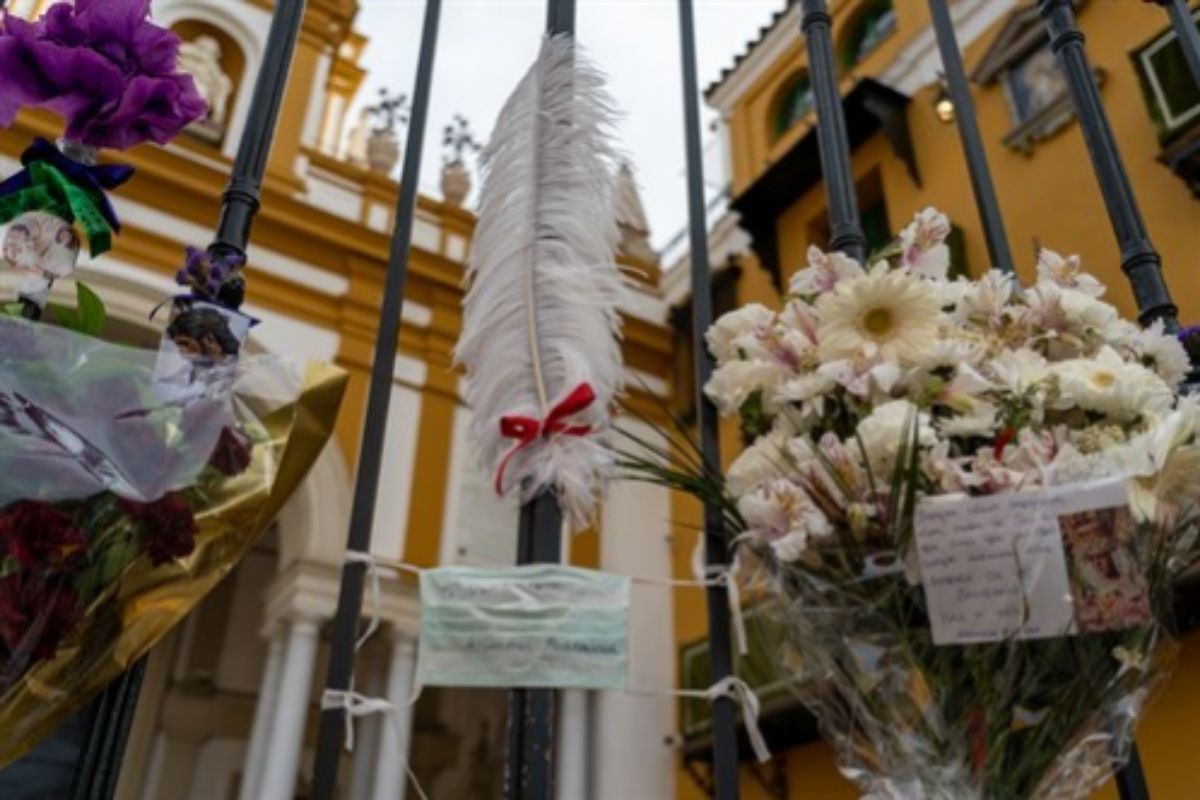- Emergency: an intimate and digital Easter
- Spring festivities: the virus that he stole from Seville in April
- Covid-19.'Crack 'economic and emotional shock in Seville after the suspension of Easter for the coronavirus
Rafael Carrellán has been the brother of Esperanza de Triana for 29 years and for 28 years he has not missed his place in the procession that leaves at dawn on Good Friday from the chapel of Los Marineros, in the historic suburb of Seville. For three decades, this 50-year-old lawyer by profession has not slept on this day and this year, despite everything, despite the coronavirus, he has not.
At two in the morning, when the Guide Cross was to cross the threshold of the temple, Rafael, like so many of the 14,000 brothers that this brotherhood has - one of the most distinguished of Seville's Holy Week - began the strange season of penance to which the Covid-19 has forced. In the living room of his house, in front of the television screen, attending the premiere of an audiovisual of the Esperanza de Triana and following the live broadcast, through the brotherhood channel on YouTube, of the Via Crucis that in other times was the substitute when the rain prevented the processional exit.
"The important thing is to feel religious. You have to be consistent with what is said and believed and I try," says Rafael from his confinement brother, in which he must still smell the incense he lit last night, as did the Holy Monday, when he should have left, and neither did the Brotherhood of San Gonzalo, of which he is also a brother.
Inclement weather aside, that is part of the very essence of Easter, the coronavirus has achieved this 2020 what the massive stampedes of the year 2000 did not achieve - which were repeated in 2015 and 2017, although to a lesser extent - nor the threat of jihadist terrorism. Seville had in recent years shielded its Madrugá against vandals and terrorists with a security device that even allowed regulating public lighting if an emergency situation was detected at a specific point in the city. But for the Covid-19 everything has been useless.
First it was in the year 2000, when massive stampedes took place that caused panic and left more than 200 wounded. Then they were repeated in 2015, even forcing the Brotherhood of La Macarena to vary their route, and two years later, in 2017 the Madrugá was once again synonymous with fear.
The following year, the jihadist threat was present at Easter, which became a declared target for Islamic extremists. A young Moroccan man, settled with his family in Seville, was detained in the Maghreb country when he was preparing to attack the passing of the processions in the Andalusian capital. His name, Zouhair El Bouhdidi, 23 years old when he was arrested in Casablanca while preparing to carry out a real massacre.
To face these two challenges, in recent years in Seville an authentic army of 6,000 people has been mobilized, among members of the State Security, Health and Emergency Forces and Bodies, in addition to other municipal services that had managed to shield a Holy Week whose importance is measured in three figures: 84,000 Nazarenes, 71 brotherhoods and 1,730 streets as a stage. A guarantee until the third challenge arrived, an invisible enemy called SARS-Cov2 against which the Madrugá, like all Holy Week, in Seville and in the rest of Spain, has been unable.
Seville has lived this year an unprecedented Madrugá of empty streets, closed churches and, above all, silence. The Madrugá in Seville has not been on the Triana bridge at the Esperanza pass or on the arch to which the Macarena is named. Not even the Great Power, the Lord of Seville, has crossed the threshold of his basilica, in the San Lorenzo neighborhood. The Madrugá of 2020, for obvious reasons, has been lived behind closed doors, in the houses of the confreres where their robes have been hung. But, above all, the Madrugá of 2020 has been lived in and by social networks.
The brotherhoods have turned to Twitter, Facebook or YouTube to break the confinement forced by the pandemic and have used documentaries, films and live broadcasts so that the spirit of the Madrugá slipped through the cracks of the doors and windows of the city, closed with lime and stone to prevent the virus from entering.
Not only has Esperanza de Triana resorted to virtual Madrugá. The six brotherhoods that should have taken the streets of Seville tonight (El Silencio, el Gran Poder, la Macarena, Calvario, and Los Gitanos, in addition to the Triana brotherhood) have turned to social networks with a schedule in which they they have included images from other years and religious services.
It is not the same and "it is sad", as Rafael, the brother of Esperanza de Triana with whom these lines began, points out. But sadder is, he laments, "the human drama " that many families are living through the coronavirus. "The situation is sad, why should we deny it" also because of the date on which the pandemic occurred. The consolation that remains is that this happens as quickly as possible and that "next year we will take it with more enthusiasm." Amen.
According to the criteria of The Trust Project
Know more- Andalusia
- Seville
- Coronavirus
- Covid 19
- Holy Week Seville
Direct witnessThe virus that he stole from Seville in April
CoronavirusThe Andalusia of the balconies against the coronavirus: the neighbors do sports and play bingo
CoronavirusSevilla, Cádiz and Jaén will also manufacture the Junta's respirator, which would arrive in hospitals in ten days

